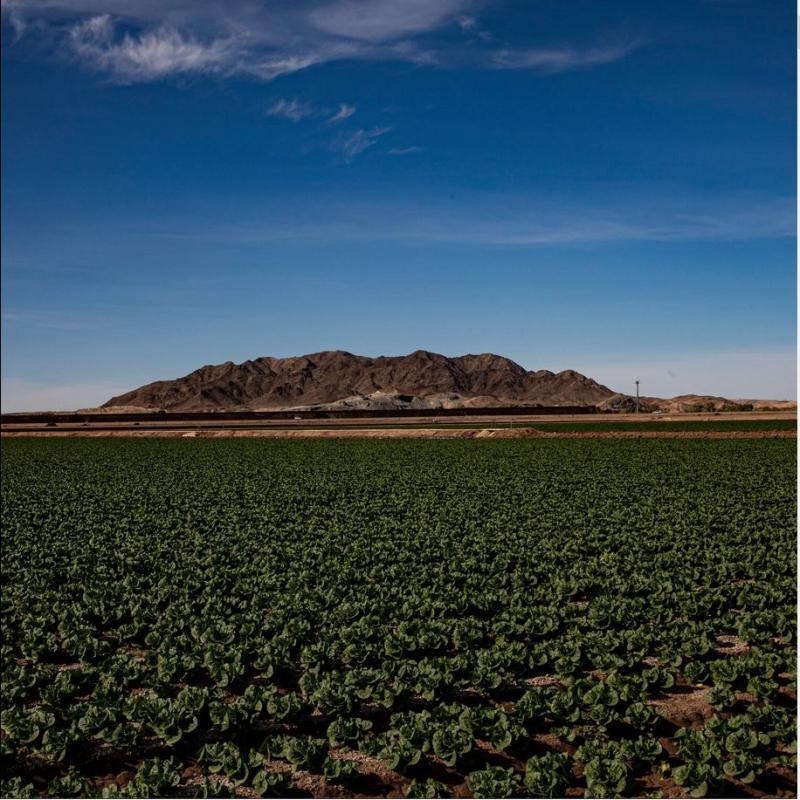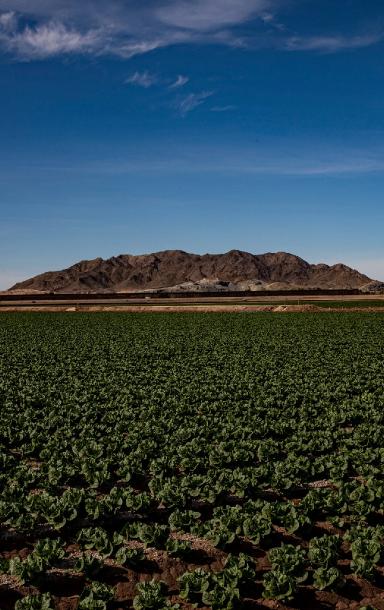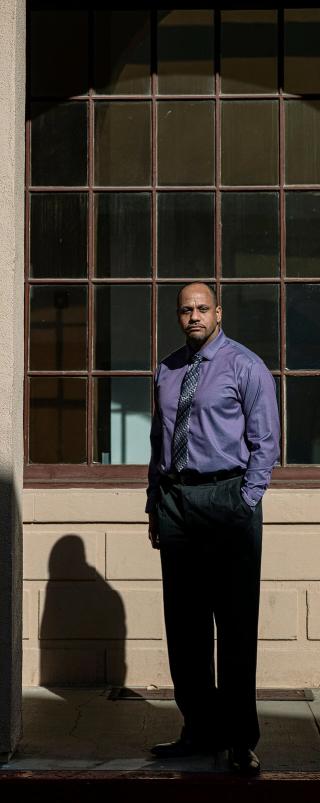Yuma County, Arizona, Becomes Fertile Ground for Covid-19
By: Miriam Jordan - The New York Times


The hospital in Arizona's Yuma County, on the border, is so overwhelmed it's had to fly Covid-19 patients to other cities.
No other region has had a higher case rate during the pandemic.

Yuma is our primary residence. We're here most of the year, clearing out when it gets REALLY hot.
There's a pall of fear laying low over this city of the elderly.
This was published a week ago. Things get worse every day... 


The Rev. Emilio Chapa was delivering a homily on a recent Sunday when he paused to lament a sight that had shaken him as he entered the sacristy before Mass.

Yuma County, which produces the lettuce, broccoli and other leafy greens that Americans consume during the cold months, is known as "America's salad bowl." Now it has become a winter hothouse for Covid-19.
Over the course of the pandemic, the Yuma area has identified coronavirus cases at a higher rate than any other U.S. region. One out of every six residents has come down with the virus.
Each winter, Yuma County’s population swells
by 100,000 people, to more than 300,000,
as field workers descend on the farms and
snowbirds from the Midwest pull into R.V. parks.
Adriana Zehbrauskas for The New York Times
Father Chapa's parish is weathering the full spectrum of the pandemic's surge. In Spanish and English, he ministers to Mexican-American families who have been rooted here for generations as well as the seasonal residents, all of them afflicted. The church is handling three times the number of funerals it usually does.
"Some families have buried multiple relatives," Father Chapa said. "It's a dire situation."
While coronavirus cases are starting to flatten across the country, the virus is still raging in many border communities. Three of the six metro areas with the highest rates of known cases since the outbreak began are small cities straddling Mexico: Yuma; Eagle Pass, Texas; and El Centro, Calif. And Laredo, Texas, is adding cases at a per capita rate more than three times what is being seen in hard-hit Los Angeles and Phoenix.
Seasonal migration, the daily flow of people back and forth and lax measures to contain the virus's spread have created a combustible constellation. Arizona has seen among the highest increases in newly reported deaths of any state over the past two weeks — and it is not clear when this troubling trend will abate.

Halfway between San Diego and Phoenix, but geographically isolated from both, Yuma has only one hospital. Understaffed and overwhelmed with cases, it has been airlifting critically ill patients to other cities. And the fallout from Christmas and New Year festivities is not over.
"It's a wave of critically ill people that isn't breaking," said Cleavon Gilman, an emergency medicine doctor at Yuma Regional Medical Center.
Adriana Zehbrauskas for The New York Times
There are farmhands, loath to miss work, who waited too long to seek medical attention. There are retirees who stubbornly believed that they could power through Covid-19, just as they did when stricken with a flu, or who refused to wear masks. There are members of families who live in tight quarters or who could not resist gathering to celebrate the holidays.
Dr. Gilman blames the governor, Doug Ducey, for not enacting stringent measures. "Everything is open: restaurants, gyms, barbershops," he said. "People are needlessly dying because there is no statewide mandate to prevent it."
As the virus continues its rampage, the county has failed to secure an adequate supply of vaccines.
After inviting those 75 and older, teachers and law enforcement to schedule appointments recently, the health department announced that it had run out of vaccines, in part because state officials appeared not to take into account the region's winter population bulge when they allocated doses.
"There was no plan to get the vaccine to the people who need it," said Amanda Aguirre, president of the Center for Border Health, a network of nonprofit clinics. "We don't have time to wait. It needs to be now."
A special risk for farmworkers
Between October and March each year, as many as 40,000 "lechugeros," or lettuce people, toil in Yuma, whose mild temperatures and Colorado River-irrigated land make it the ideal spot to grow leafy vegetables.
Thousands commute daily from Mexico to the verdant fields that stretch into the distance, where the rust-colored Gila Mountains glisten. Guest workers stay in motels in town.
Before dawn on a recent morning, Mexican workers trickled through the port of entry and boarded dozens of rickety white buses that idled nearby. Plastic sheets hung between rows; only one rider was allowed per bench. "If anyone has a temperature, I send them back," said Gabriel Talamantes, one of the foremen.
A couple mornings later, health workers offered a free saliva test to laborers as they emerged on U.S. soil. "It's for your good and the good of your family," a loudspeaker blared in Spanish.
"We noticed younger people avoided testing," said Flavio Marsiglia, director of the Global Center for Applied Health Research at Arizona State University. "We believe many of those young people are positive with no symptoms and spreading the virus."
"They ride those buses that are very crowded, work very close to each other in the field, share food," he added. "It's very easy to spread the virus in those conditions."
 Before dawn on a recent morning, Mexican workers trickled through the port of entry and boarded dozens of rickety white buses that idled nearby. Before dawn on a recent morning, Mexican workers trickled through the port of entry and boarded dozens of rickety white buses that idled nearby.Adriana Zehbrauskas for The New York Times |
 Plastic sheets hung between rows on the buses transporting workers; only one rider was allowed per bench. Plastic sheets hung between rows on the buses transporting workers; only one rider was allowed per bench.Adriana Zehbrauskas for The New York Times |
 |
|
| Mild temperatures and Colorado River-irrigated land make Yuma the ideal spot to grow leafy vegetables. Adriana Zehbrauskas for The New York Times |
|
Arizona's attempts to control the virus
Yuma reported its first presumptive case of the coronavirus on March 20, the same day that the governor initially closed bars, movie theaters and gyms, and limited restaurants to takeout and drive-through service.
"We'd seen how bad it got in New York, Seattle and bigger places. We were thinking it's not going to be a big deal in Yuma," said Rick Madrid, 41, manager for a wholesale food distributor who can count 11 people in his circle of family and friends who have contracted the virus.

Adriana Zehbrauskas for The New York Times
The first death in the county occurred in late April.
In mid-May, Mr. Ducey lifted stay-at-home orders, making Arizona among the first states to reopen after a spring lockdown. As temperatures soared past 100 degrees, forcing people indoors, the caseload resumed its ascent.
On June 17, the county board of supervisors issued a mask mandate. It required all establishments to post a sign requiring face coverings and stipulated that violators would be charged with a misdemeanor. But Sheriff Leon Wilmot announced that he lacked resources to enforce the rule.
A politically charged debate raged over the utility of masks and whether the virus posed a real threat. On June 26, a friend of Mr. Madrid's who had been an outspoken anti-masker posted a picture of NyQuil on his Facebook page with the caption, "This is all I need to fight the bug."
He died on July 11. Another friend died days later. "By July, I was like, I can't believe this," Mr. Madrid said.
The virus would soon creep up on his own family.
Image"We'd seen how bad it got in New York, Seattle and bigger places," Rick Madrid said. "We were thinking it's not going to be a big deal in Yuma."Credit...Adriana Zehbrauskas for The New York TimesImageImage
 |
 |
| Family portraits hanging with religious icons in the living room of Mr. Madrid's parents' home in Yuma. Adriana Zehbrauskas for The New York Times |
The entrance to the home. Adriana Zehbrauskas for The New York Times |
His father, Richard, 77, a chiropractor, and his mother, Carole, 75, the office manager, had been traveling back and forth to their clinic on the Mexican side of the border each day. Many of his loyal clients, most of them snowbirds, were in Yuma, counting on him to soothe their back, shoulder and hip pains.
In mid-November, against their son's wishes, the couple visited a restaurant that had hired Rick to roast a pig on the back patio. "He was old and stubborn, and he exhibited machismo. That's the culture," he said of his father, a Mexican-American and strong supporter of former President Donald J. Trump. "He wasn't going to let this bug dominate him."
Two days later, the couple began exhibiting flulike symptoms that turned out to be Covid-19.
The same week, Mr. Madrid's two siblings and their spouses tested positive for the virus.
On Nov. 29, his father died. Five days later, Mr. Madrid gave in to the urge to visit his mother, ailing and grieving, at the sage-green ranch-style house where he had been raised.
Soon Mr. Madrid could not smell or taste, not even his son's steak with jalapenos. He had the coronavirus. A week later, his wife also tested positive.
"As proud as I am of my community for being tough in pulling through, I am also disappointed that people didn't take it more seriously," he said.

Adriana Zehbrauskas for The New York Times
High season brings new dangers
In sun-drenched R.V. parks, septuagenarians in shorts gather with fellow snowbirds for cocktails, sports and sunning under cloudless blue skies in the high season.
Kristi and Timothy Getz have been coming for more than a decade to Country Roads RV Village, an expansive retirement resort crisscrossed by streets with names like Party Time and Good Time.
"This place is paradise," said Ms. Getz, who lives with her husband in a cheerful manufactured home on Off We Go Street. "My best friends are here."
Ms. Getz, a retired manager of a truck dealership in San Jose, Calif., does not miss a dance party and loves the shows in the ballroom. Mr. Getz, a former military driver, plays the electric piano in jam sessions with his buddies.
But the pandemic has undermined community harmony — and spoiled the fun.
Just a couple of days after some 200 residents celebrated the groundbreaking for the ballroom expansion with a "burger bash" in March, the governor issued a stay-at-home order.
"We went from hugging and congratulations and excitement to 'What do you mean there's a lock on the pickleball court and I can't go in the swimming pool or in the exercise room?'" recalled Pat Tuckwell, a retired health care executive from Madison, Wis., who is president of the board of directors.
Every activity, from card clubs to woodcarving and quilting, was halted.
On the Facebook page Country Roads Rants and Rages, arguments broke out between residents who believed that the virus was a hoax and those who did not. "Half the park was in denial," said Mr. Getz, who was among those "fighting for the science."

The governor issued a stay-at-home order in March.
"Half the park was in denial," recalled Mr. Getz, who was among those "fighting for the science."
Adriana Zehbrauskas for The New York Times
By the time restrictions were lifted in mid-May, most of the snowbirds had returned to their hometowns for the summer.
Back in October, they found recreational facilities reopened, with certain rules. The number of people allowed in the pools and the fitness center was limited. Card clubs remained banned.
That month, the first three cases of the virus were reported to the board. In November, the community had its first fatality.
A sign went up outside the gym in early January. The facility was closed for deep sanitizing after someone refused to wear a mask.
"Hats off to the guy that would not wear his compliance mask," declared one resident on Facebook.
As of Jan. 8, there have been 55 known cases and three deaths in the community, but Ms. Tuckwell said the actual tally was quite likely higher, given that cases are self-reported.
Ms. Getz was horrified when she recently noticed eight people playing cards inside a nearby home, none wearing masks. Her husband did not let her confront them.
"I just don't understand it when Yuma is such a hot spot," she said.
At St. Francis of Assisi, worshipers pray, but prayers have not kept the virus at bay.
Armida Lopez, one of the parishioners, said she had lost count of the members of her family who have been stricken.
"People in my family are dying every day, it seems. First cousin, second cousin, uncle, brother-in-law," she said, her voice trailing. "Right now, it's like, who is going to die next?"
Tags
Who is online
57 visitors


I have an 85-year-old cousin who lives here. (Indirectly, that's how we ended up here, too.) He and his wife (same age) have company over, all the time. Not coincidentally, they are TrumpTrueBelievers.
My wife and I are both old enough to qualify for vaccination. There aren't enough shots.
It seems that the number of shots allotted to Yuma was based on the off-season population.
"Maybe next week," says the local vaccination center.
I have the opposite problem. I too also qualify due to my age and the vaccine is available but I have no way to get to a site to get it.
The ''salad bowl'' of the nation may not be producing much this year. A sad situation for the people of Yuma and the surrounding area.
What else can go wrong?
Hey!
This is Arizona!
Anything can go wrong...